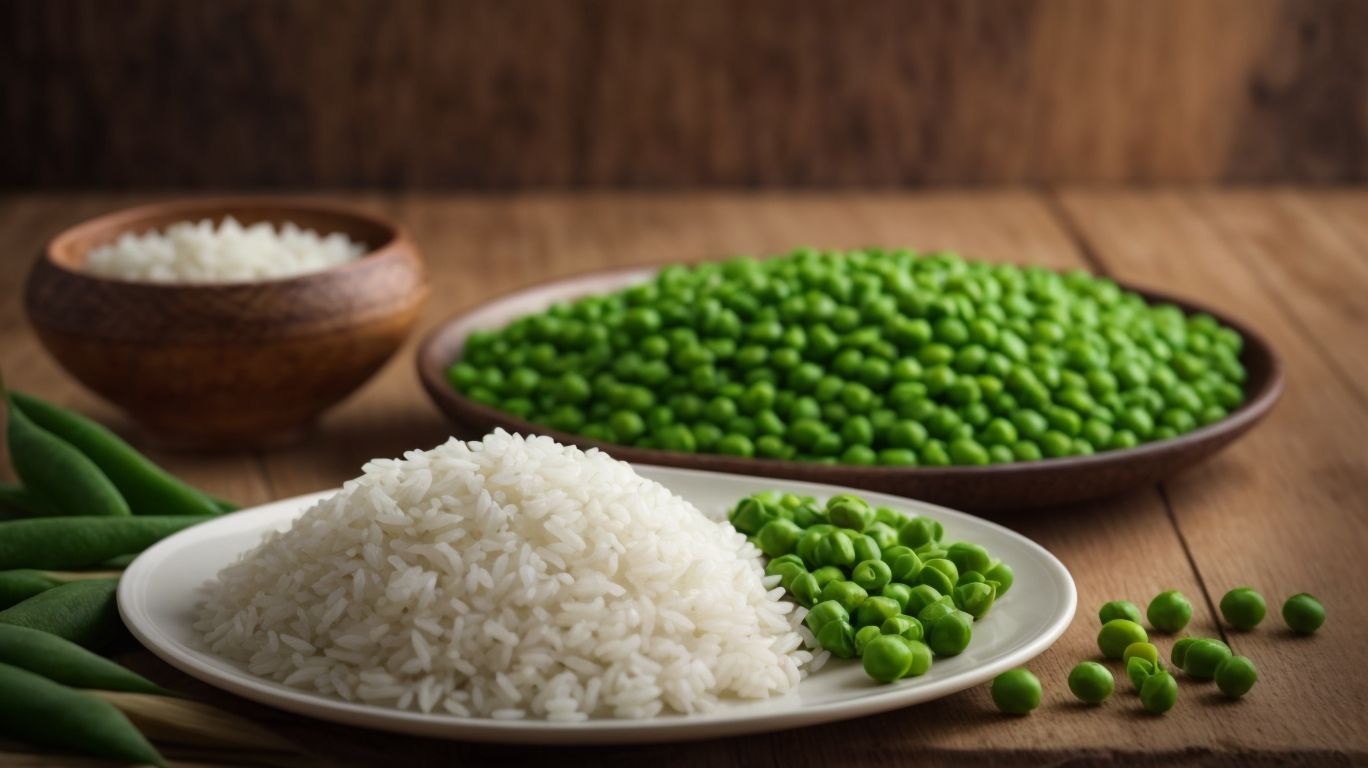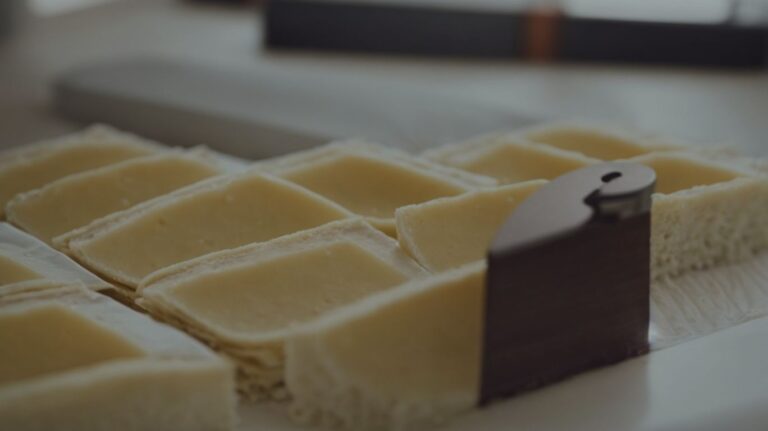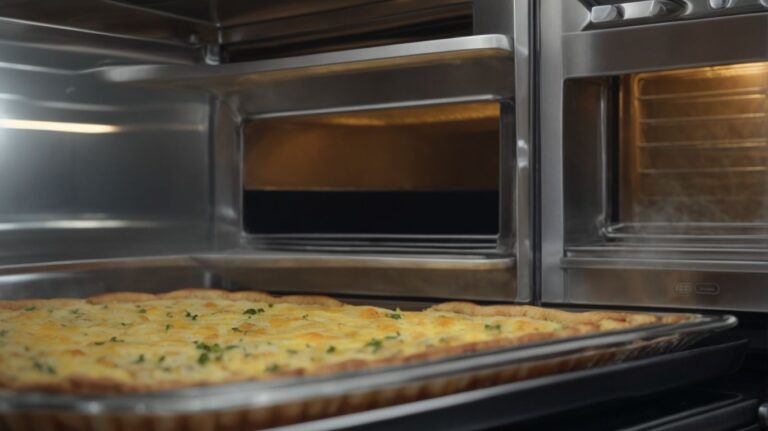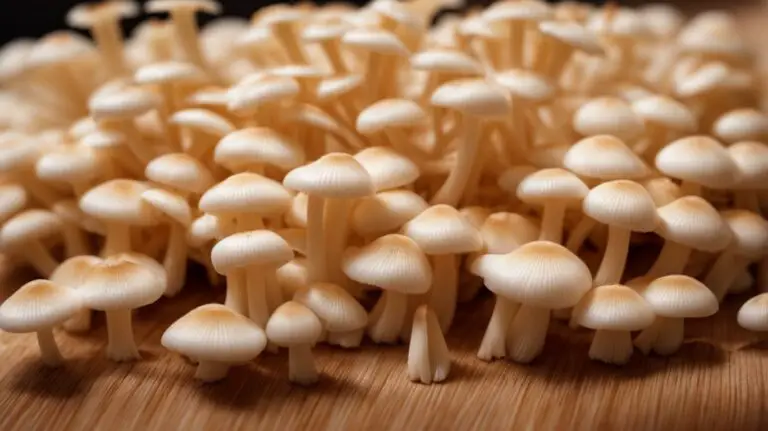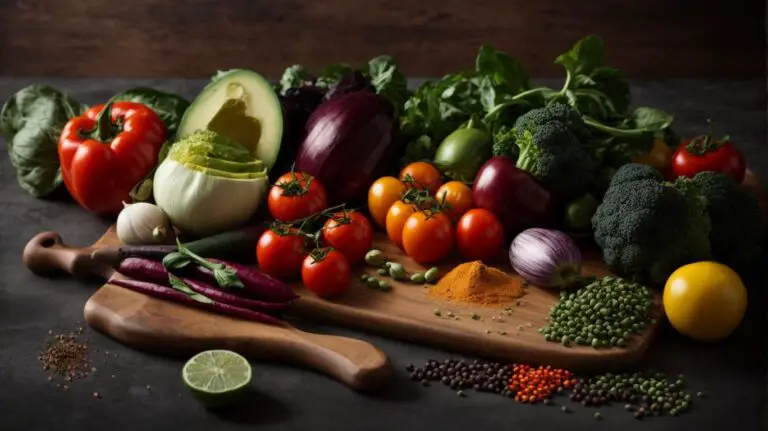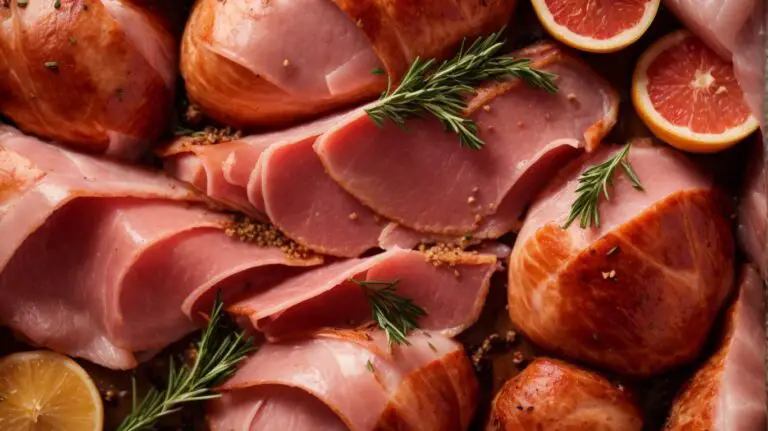How to Cook Peas With Rice?
Are you looking to add a new, flavorful dish to your cooking repertoire? Look no further than peas and rice!
In this article, we will guide you through everything you need to know about cooking this delicious and nutritious dish. From the necessary ingredients to the best cooking methods, serving suggestions, and even tips and tricks for perfecting your peas and rice, we’ve got you covered.
Let’s dive in and discover how to cook peas with rice like a pro!
Key Takeaways:
What Are Peas and Rice?
Peas and rice refer to a culinary combination where nutrient-rich green peas are paired with aromatic basmati rice.
Green peas, a great source of plant-based protein, fiber, and various vitamins and minerals, complement the light and fluffy texture of basmati rice perfectly. This pairing not only provides a harmonious blend of flavors but also offers a wholesome meal option packed with essential nutrients.
When combined, green peas bring a vibrant color and sweet taste, while basmati rice adds a hint of nuttiness and a delicate fragrance to the dish. The nutrient-density of green peas makes them an excellent choice for boosting immunity and promoting overall health, while the basmati rice’s aromatics enhance the overall dining experience.
Whether enjoyed in a pilaf, curry, or stir-fry, the combination of peas and rice stands out as a versatile and nutritious duo in the culinary world.
Why Should You Try Cooking Peas and Rice?
Cooking peas and rice offers a simple yet flavorful side dish or a satisfying main meal that is easy to prepare and family-friendly.
Peas and rice, with their blend of textures and flavors, can be adapted to suit a variety of dining occasions, ranging from casual family dinners to more formal gatherings. The beauty of this dish lies in its versatility; it can be served alongside grilled meats for a hearty meal, or enjoyed on its own for a vegetarian-friendly option.
- For a comforting weeknight meal, consider pairing peas and rice with succulent roast chicken or flavorsome grilled fish.
- Alternatively, for a larger gathering, this dish can be easily scaled up and served buffet-style, allowing guests to help themselves to heaping spoonfuls of this delectable favorite.
Whether you are looking to whip up a quick and nutritious meal for the family or impress guests with a delightful side, peas and rice are sure to become a go-to dish in your culinary repertoire.
Ingredients for Peas and Rice
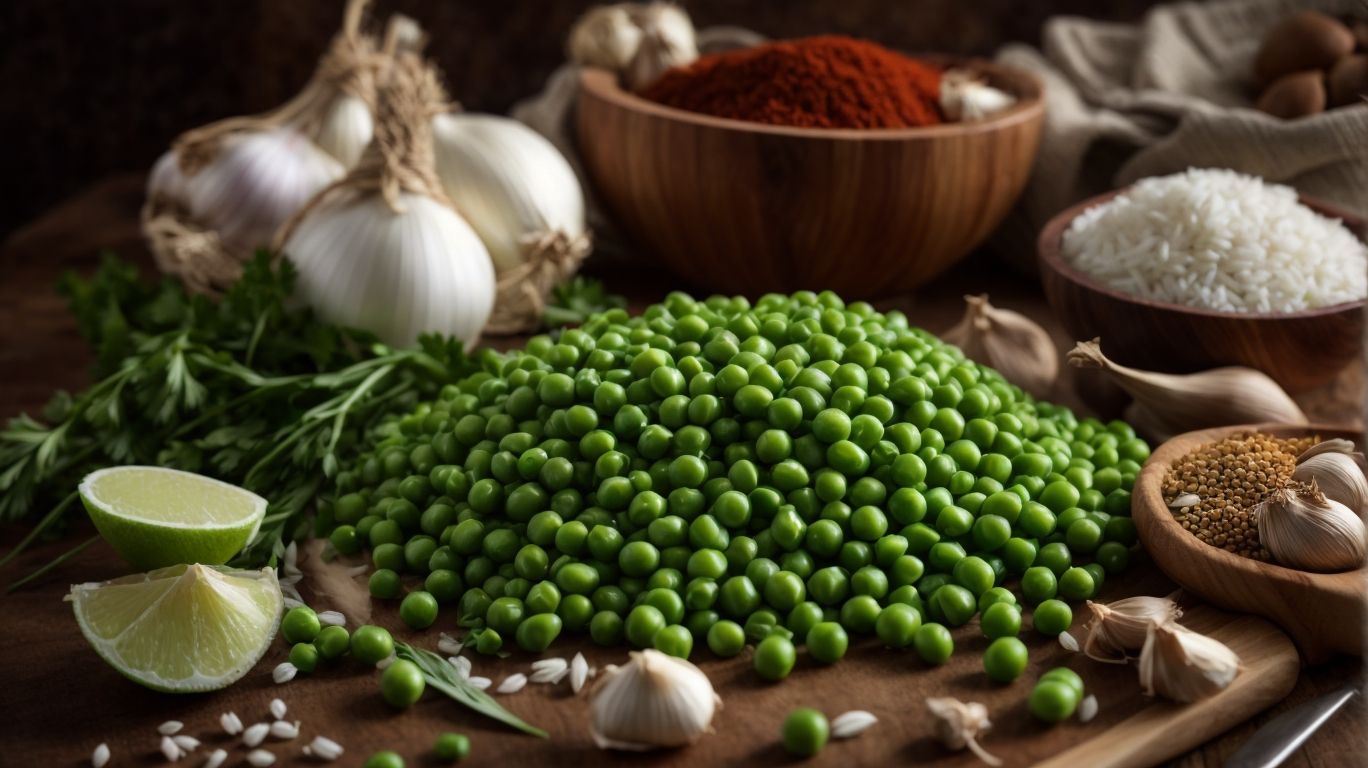
Credits: Poormet.Com – Gary Hall
The preparation of peas and rice requires a blend of essential ingredients that contribute to its nutritional profile, offering a balance of protein, carbohydrates, and flavors.
What Are the Necessary Ingredients?
To create the perfect peas and rice dish, you will need green peas, fragrant basmati rice, water, salt, and butter for a touch of richness.
The key to a flavorful peas and rice recipe lies in the quality and freshness of the green peas. Look for vibrant, firm peas that are bursting with sweetness to elevate the dish. Regarding choosing the basmati rice, opt for the long-grain variety known for its delicate aroma and fluffy texture that complements the peas beautifully. The water plays a crucial role in cooking the rice to perfection, ensuring each grain is tender and separate.
Don’t underestimate the impact of salt – it not only enhances the overall taste but also helps bring out the natural flavors of the peas and rice. A knob of butter adds a luxurious richness that rounds off the dish, creating a comforting and satisfying meal that is sure to please your taste buds.
What Are Some Optional Ingredients?
For those seeking to elevate the flavors of peas and rice, optional ingredients like fresh ginger, cloves, cinnamon stick, and Serrano pepper can add a depth of aromatic complexity.
Incorporating fresh ginger into the cooking process can infuse the dish with a zesty, warm note that complements the sweetness of peas and the nuttiness of rice.
- The addition of cloves brings a hint of earthy warmth, subtly enhancing the overall flavor profile.
- Adding a cinnamon stick introduces a touch of sweet spiciness, offering a contrast that tantalizes the taste buds.
- A Serrano pepper provides a gentle heat that harmonizes with the other spices, creating a well-balanced dish with a kick.
By combining these optional ingredients, you can transform a simple peas and rice dish into a culinary masterpiece bursting with vibrant flavors and enticing aromas.
Preparation for Peas and Rice
The preparation process for peas and rice involves essential steps such as soaking the rice, rinsing the peas, and following precise directions to achieve the perfect dish.
How to Soak and Rinse the Rice?
To ensure fluffy and fragrant basmati rice, begin by soaking the grains in water, rinsing them thoroughly, and draining using a fine mesh strainer.
For soaking, place the basmati rice in a bowl and cover it with enough water to submerge the grains completely. Add a pinch of salt to enhance the flavor absorption process. Let the rice sit in the water for at least 30 minutes to allow it to soften and expand.
After soaking, gently rinse the rice under cool running water to remove excess starch. Ensure you use a gentle touch to avoid breaking the grains. Next, transfer the rinsed rice to a saucepan filled with fresh water for cooking.
How to Prepare the Peas?
Preparing the peas involves boiling them in salted water until they achieve a tender yet vibrant texture through gentle simmering over low heat.
When cooking green peas, ensure to use a pot with enough water to cover the peas completely. Adding a generous amount of salt to the water helps to enhance the natural flavor of the peas. Once the water reaches a gentle boil, carefully add the peas and reduce the heat to a simmer. It is crucial not to overcook them, as they can turn mushy and lose their vibrant color and nutrients.
Regularly check the peas for doneness by testing their tenderness with a fork. Cooking times may vary depending on the size and freshness of the peas, so keep a close eye on them. Once they are just tender, promptly remove them from the heat and drain them to stop the cooking process.
Cooking Peas and Rice
The cooking stage of peas and rice involves combining fluffy cooked basmati rice with tender green peas, enriched with butter for a fragrant texture and simmering to infuse flavors by the inch.
What Is the Best Method for Cooking Peas and Rice?
Using a rice cooker or microwave can streamline the cooking process for peas and rice, ensuring a quick and convenient meal preparation in just a few minutes.
Both rice cookers and microwaves offer a hassle-free way to cook peas and rice without the need for constant monitoring or stirring. The automatic functionalities in these kitchen appliances allow you to set the cooking time and simply walk away until your meal is ready.
The even heat distribution in a rice cooker guarantees perfectly cooked peas and rice every time, while the microwave’s quick heating capabilities make it ideal for those who are short on time.
These appliances are easy to clean, saving you precious minutes in the kitchen after the meal is served.
How Long Does It Take to Cook Peas and Rice?
The cooking duration for peas and rice varies, but typically involves sautéing onions in butter, adding peas, simmering in water until cooked, and stirring to achieve a harmonious blend of flavors.
When preparing this delightful dish, the sautéing of onions is a crucial step that sets the foundation for the entire flavor profile. Allowing the onions to caramelize in the butter releases their natural sweetness, enhancing the overall taste.
Once the onions are perfectly golden, it’s time to introduce the peas into the mix. The simmering process in water is essential to ensure that the peas are tender yet still have a slight bite to them, adding texture to the dish.
Through gentle stirring, the flavors of the onions and peas intertwine, creating a savory symphony that is both comforting and satisfying.
Serving and Pairing Peas and Rice
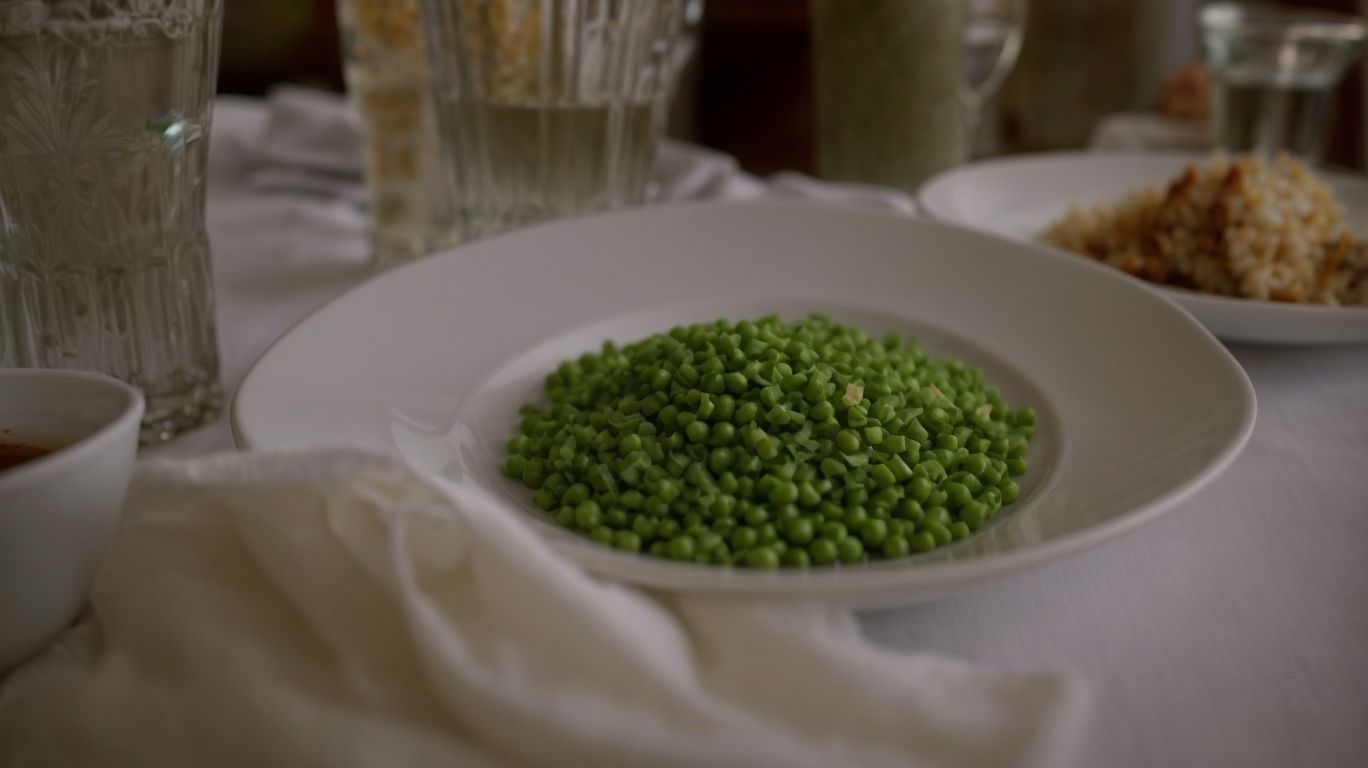
Credits: Poormet.Com – Nicholas Robinson
Serving peas and rice presents an opportunity to enrich the dish further by adding garlic-infused broth for a delightful combination that tastes great with the inherent flavors of peas and rice.
How to Serve Peas and Rice?
Peas and rice can be served as a simple standalone dish, or paired with meats, fish, or vegetables to create a well-rounded meal that caters to diverse taste preferences.
When serving peas and rice as a standalone dish, consider adding a touch of herbs or spices like parsley, mint, or cumin to enhance the flavors.
This dish can also be transformed into a hearty main course by incorporating protein-rich ingredients such as chicken, tofu, or shrimp.
Alternatively, for a lighter option, pair it with grilled vegetables like zucchini, bell peppers, or eggplant.
The beauty of peas and rice lies in its adaptability, making it a versatile canvas to experiment with various flavors and textures.
What Are Some Delicious Pairings for Peas and Rice?
Pairing peas and rice with fragrant Jasmine rice, fresh herbs, and sautéed onions can elevate the dish with additional flavors and create a light yet satisfying meal experience.
Regarding enhancing the flavors of peas and rice, Jasmine rice’s aromatic profile perfectly complements the earthy sweetness of peas. The freshness of herbs adds a vibrant and zesty dimension, while sautéed onions bring a rich, caramelized flavor into the mix.
For a delightful twist, consider tossing the Jasmine rice with a medley of chopped fresh herbs like parsley, mint, and cilantro before combining it with the peas. The onions can be gently caramelized to sweet perfection, adding a depth of flavor that harmonizes beautifully with the pea’s natural sweetness.
The combination of these ingredients not only enhances the taste but also introduces a variety of textures to the dish, making every bite a delightful experience. Whether served as a side or a main, this flavorful pairing is sure to impress your taste buds and elevate your dining experience.
Tips and Tricks for Perfect Peas and Rice
Achieving the perfect peas and rice dish requires attention to detail, especially to avoid overcooking the rice, infuse maximum flavor, and store any leftover portions correctly for later enjoyment.
How to Avoid Overcooking the Rice?
To prevent overcooked rice, follow precise cooking times and consult with a dietitian or medical professional for tailored advice on maintaining optimal health and nutrition.
Timing is key when preparing peas and rice recipes to ensure that the rice turns out fluffy and perfectly cooked. One useful tip is to measure the rice and water accurately, as the ratio is critical for the desired texture. Ensuring the water comes to a gentle boil before adding the rice can also help in achieving the right consistency.
Consistency in monitoring the cooking process is crucial. Use a timer and check the rice periodically to avoid overcooking. Adjust the heat as needed to maintain a steady simmer, and resist the temptation to lift the lid frequently, as this can disrupt the cooking process.
How to Add Flavor to Peas and Rice?
Enhancing the flavor of peas and rice can be achieved by experimenting with different recipes, adding a touch of sugar for sweetness, and considering the calorie content for dietary awareness.
This culinary journey of enhancing peas and rice can lead to a delightful array of flavor variations. By incorporating sugar strategically, the natural sweetness of peas can be accentuated, complementing the savory notes of rice. It’s important to remember that while sugar can enhance taste, it is also crucial to strike a balance to maintain mindful eating habits and calorie considerations. Exploring the interplay of spices, herbs, and other seasonings can further elevate the dish, offering a mix of textures and tastes for a wholesome dining experience.
How to Store Leftover Peas and Rice?
When storing leftover peas and rice, ensure proper refrigeration in a covered container and reheat gently in a pan or microwave, stirring inch by inch for even distribution of heat.
Leftover peas and rice can be a delicious treat when reheated correctly. It is essential to maintain the freshness and flavor by promptly refrigerating the leftovers within two hours of cooking. Choose an airtight container to store the dish, preventing any exposure to air that might lead to spoilage. When reheating, opt for gentle methods such as stove-top heating or microwave reheating to prevent drying out the peas and rice. It’s crucial to stir the mixture periodically while reheating to ensure the heat is evenly distributed throughout.
Frequently Asked Questions
What are the basic steps for cooking peas with rice?
In order to cook peas with rice, you will need to follow these steps:
1. Rinse rice in cold water before cooking.
2. Heat a pot with water and bring it to a boil.
3. Add the rice and bring it to a second boil.
4. Reduce heat to low and cover the pot with a lid.
5. Cook for about 16 minutes or until the rice is tender.
6. In a separate pan, cook peas in boiling water for 3-4 minutes.
7. Drain peas and add them to the rice.
8. Cover the pot with the lid and let it sit for 5 minutes.
9. Fluff the rice and peas with a fork and serve.
Can I use frozen peas instead of fresh ones for cooking with rice?
Yes, you can use frozen peas for cooking with rice. However, make sure to thaw them before adding them to the rice. You can also add them directly to the pot during the last few minutes of cooking.
What type of rice is best for cooking with peas?
Any type of white or brown rice can be used for cooking with peas. However, basmati or jasmine rice are popular choices for their fragrant flavor and fluffy texture.
How do I add more flavor to my peas and rice dish?
You can add more flavor to your peas and rice dish by using vegetable or chicken broth instead of water when cooking the rice. You can also add herbs and spices such as thyme, garlic, and cumin for additional flavor.
Can I add other ingredients to my peas and rice dish?
Yes, you can add other ingredients to your peas and rice dish to make it more flavorful and nutritious. Some popular additions include diced carrots, diced onions, and shredded chicken.
How do I prevent my peas and rice from becoming mushy?
To prevent your peas and rice from becoming mushy, make sure to cook the rice separately from the peas and only combine them at the end. Also, be careful not to overcook the peas, as they can become mushy quickly.

